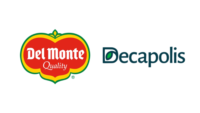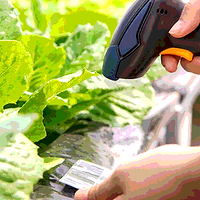Food manufacturers and suppliers navigating the current safety environment must feel a bit storm-tossed, as an array of national and regional regulations evolve—sometimes clearly, sometimes not. An important element of this environment is product traceability, which can mean the difference between a short recall process and a long process that can ruin a company’s bottom line, along with customer loyalty and confidence.
At the same time, food safety-minded sectors in the food industry are proceeding on independent yet parallel paths toward improving traceability in their supply chains. Although each sector has unique challenges—for instance, packaging red snapper is quite different from packaging red peppers—the common denominator in these traceability efforts is the use of GS1 standards.
Widely used in consumer-packaged goods since the 1970s, but only recently adopted by fresh foods companies, GS1 identification numbers and associated bar codes appear in traceability efforts for multiple fresh food sectors:
• The Produce Traceability Initiative, spearheaded by the Canadian Produce Marketing Association, GS1 US, Produce Marketing Association and United Fresh Produce Association, with senior leadership from the sector’s largest retailers and providers
• The Traceability for Meat and Poultry U.S. Implementation Guide, created by the American Meat Institute, GS1 US, Meat and Poultry Data Standards Initiative, U.S. Department of Agriculture, National Turkey Federation, Perdue Farms, Safeway Inc., Smithfield Foods, Supervalu Inc., Topco Associates LLC, Tyson Foods, UFPC YUM! Brands, Walmart and Wegmans Food Markets
• The Traceability for Seafood Implementation Guide, created by the National Fisheries Institute and GS1 US, with contributions from a large number of businesses, including Bumble Bee, Darden Restaurants and Gorton’s
• The Foodservice GS1 US Standards Initiative, which is partly aimed at providing a foundation for food safety in foodservice and counts more than 60 founding members, along with the International Foodservice Manufacturers Association, International Foodservice Distributors Association and the National Restaurant Association
These efforts, while largely centered in the U.S., incorporate global processes and organizations and are designed for global adoption and use.
With the scope of the firms involved and the rapid technological changes taking place in today’s global supply chain, the pencil-and-clipboard approach to traceability will no longer be sufficient moving forward, no matter how efficient a company’s filing system is today. Electronic record keeping will become even more necessary, and the global language for identifying products and locations in the digital supply chain is the GS1 System.
Leaders in fresh food sectors understand this, and also recognize the value of operating a system in which consumers and regulators can have confidence.
Traceability: As Easy as KDE and CTE
To achieve the highest levels of supply chain traceability, trading partners must be able to link products with locations and times. For this purpose, the Institute of Food Technologists (IFT), in its 2009 Traceability (Product Tracing) in Food Systems Technical Report, described two foundational concepts: Key Data Elements (KDEs) and Critical Tracking Events (CTEs).
Trading partners should use a variety of KDEs, including but not limited to the following:
• Lot or batch number(s) shipped to each location
• The physical location that last handled a product and, if applicable, contact information for the broker who handled the transaction
• Incoming lot numbers of product received
• Amount of product manufactured or shipped
• Each physical location where cases were shipped (including individual retail and foodservice locations)
• When (date/time) product was received and/or shipped
• Ingredients with corresponding lot numbers
The IFT recommends companies record KDEs and link them to CTEs to support product tracing. CTEs are “events that must be recorded in order to allow for effective traceability of products in the supply chain,” for example, “instances where a product is moved between premises, is transformed, or is otherwise determined to be a point where data capture is necessary to trace a product.”
To most efficiently identify, trace and track CTEs and KDEs and share this information with multiple parties, businesses need to use a single, global, open system of supply-chain standards. The GS1 System of standards is the most widely used system in the world, with 1.5 million businesses using the standards to identify, capture and share product information within their own facilities and as products move from trading partner to trading partner to consumer.
With GS1 standards as a foundation, addressing CTEs and KDEs is achievable. Users may only need to add a small amount of data, such as batch/lot numbers in machine-readable formats, or expand how and when data is captured as products are received, processed and shipped to retail and foodservice customers.
GS1 Visibility Standards for Product Tracing
The GS1 System is an integrated suite of global standards that provides supply chain visibility through the accurate identification, capturing and sharing of information regarding products, locations, assets and services. Using GS1 identification numbers, companies and organizations around the world are able to globally and uniquely identify physical entities like trade items, physical locations, assets and logistic units as well as less-tangible things like corporations or a service relationship between a distributor and an operator. This provides the foundation for conducting business: a common language between trading partners in the supply chain.
When this identification system is leveraged to share product information such as product master data, transactional data and/or physical event information, the connection is made between these physical or less-tangible items and the information the supply chain needs about them. These are the foundational elements supporting CTEs and KDEs.
It’s a powerful three-step process. First, companies must identify products and locations using a standardized numbering system. Second, companies must capture the standardized identification in a common approach, that is, bar codes and/or electronic product code (EPC)-enabled radio frequency identification (RFID) tags. Third, once companies are using a common language to identify and capture product data, they can share the information in a standardized format, ensuring data completeness and accuracy.
Identify Information
The GS1 System provides globally accepted identification numbers to support a common language for the communication of product information from company to company. The GS1 identification number for products is the GS1 Global Trade Item Number (GTIN). For decades, GTINs have facilitated the sharing and communication of product information among supply chain partners. Moreover, they have provided the foundation for innovative improvements in supply chain management for many American industries, including the impressive and well-documented advances in the retail and grocery industries.
GS1 identification numbers provide the link between a product and the information pertaining to it. When a company assigns a GTIN to a product, it defines a set of standardized information about the product (e.g., size, weight, product type, etc.). The GS1 System specifies information standards for products. Standardized information about products includes core data, like consumable unit and product dimensions.
Standardized information about commercial entities is encoded in the GS1 Global Location Number (GLN), including such core data as information about a warehouse or restaurant. Once defined by the company, the standardized location information can be stored and shared with trading partners.
Capture Information
The GS1 System uses the universal product code and a family of more sophisticated bar code symbologies and EPC-enabled RFID tags to encode GS1 identification numbers; workers can then capture those numbers automatically with bar code scanners or RFID readers. Scanning speeds data collection and eliminates manual data collection problems, such as illegible handwriting and inattention.
The GS1 System enables users to design applications that automatically process GS1 data captured from approved bar code symbologies. Additional information such as best-before dates, serial numbers and lot numbers may also be encoded into bar codes. EPC-enabled RFID tags, which are typically applied to products during the manufacturing process, consist of a microchip attached to an antenna, allowing for capture of the number without line of sight. The product’s EPC number consists of a GTIN and a serial number, making it possible to track and trace a specific individual item with greater accuracy and intelligence.
Share Information
The GS1 System provides three standardized approaches for sharing information and to support the concepts of CTEs and KDEs. Companies can implement one method or a combination of all three, depending on what information they want to capture and share with trading partners.
1. Master Data: Master data enables “one source of truth” for specific product information. The GS1 standard that supports master data is the GS1 Global Data Synchronization Network (GDSN). With GDSN, trading partners always have the latest information in their systems, and any changes made to one company’s product information is automatically and immediately provided to all of the companies with whom they do business.
2. Transactional Data: Transactional data provides evidence of the completion of a business transaction, such as a transfer of ownership (purchase and sale) or a transfer of custody (shipping and receiving). GS1 standards that support transactional data include electronic data interchange (EDI) and extensible mark-up language business message standards. An example would be the EDI 856–Advance Ship Notice, an EDI transaction widely used in the food industry today.
3. Physical Event Data: Physical events are actual observations made in the physical world of products or other assets. Each observation captures what was observed, when it was observed, where it was observed and why it was observed (i.e., what was the business context in which the observation took place). Often physical event data is generated as the result of automatic identification, such as scanning a bar code or reading an RFID tag. The GS1 standards that support physical event data are EPC information services and the core business vocabulary.
Traceability and the GS1 System
“Tracing” refers to the business process of discovering and acting upon the path that a product or other asset takes through the supply chain. The path through the supply chain, or “trace,” is the data history that accumulates as an asset moves through the supply chain. This data history includes both physical observations of the asset (where and when it was seen) and business transactions that pertain to that asset.
At each step in the supply chain for a given product, there may be a physical event, a business transaction or both simultaneously. All of this data may be relevant in a traceability scenario, where the business goal is to understand what happened to the product in the supply chain.
By definition, a trace comprises data that are created by multiple parties in a supply chain. For a trace to be understood by any party, all parties must adhere to standards. The GS1 System provides global standards for physical events and for business transactions, as well as for the supporting master data; these standards support the potential implementation and use of KDEs and CTEs.
Conclusion
Wherever food is coming from—whether farm, orchard, pasture or sea, processing facility, all the way up to the finished product delivered at retail or foodservice—GS1 standards are increasingly being used to support traceability.
Any company not already active with GS1 standards should reach out to the GS1 organization in its country to learn how to improve its product-tracing abilities and position itself for long-term success.
Angela Fernandez is senior director of industry engagement for GS1 US, the not-for-profit organization that helps U.S.-based industries and businesses adopt and use GS1 supply chain standards, making the food supply chain more visible, secure and sustainable. Learn more at www.gs1us.org or contact GS1 US at info@gs1us.org.
SIDEBAR
Rapid Recall Exchange Enhances Food Safety with Timely, Accurate Communications
Food companies work tirelessly to ensure that their products are safe for consumption 100 percent of the time. An important component of achieving this level of excellence is being prepared for the rare and unlikely event when something does go wrong and they have to remove food from the supply chain quickly and accurately.
Rapid Recall Exchange, a web-based service launched in 2009 by the Food Marketing Institute, the Grocery Manufacturers Association and GS1 US, gives suppliers, retailers and wholesalers two-way communication to execute timely and accurate product recalls and market withdrawals.
More than 700 organizations, including 21 of the 24 largest supermarket chains based in the U.S., have subscribed to Rapid Recall Exchange, which recently received the prestigious Food Safety Innovation Award from the
International Association for Food Protection.
Rapid Recall Exchange enables a company issuing a product recall or market withdrawal to send trading partners critical product data plus handling and reimbursement instructions, along with other trading partner-specific information, within one communication via email, text and other methods. The system records when the notification was received, and who opened the message at what time.
On the receiving end of the notification, authorized users can rely on extensive data, standard forms and processes and attachments of images to execute the recall, all via the secure website. When they’ve completed the recall, they can inform the issuer, closing the loop.
By using GS1 standards, such as the universal product code and other standardized numbers, best-in-class companies can trace their products with precision and remove them from the supply chain wherever they may be on their way from source to consumer. Additionally, to ensure recall preparedness, users can conduct mock recalls with the Rapid Recall Exchange tool.
For more information, visit www.rapidrecallexchange.org.
Fresh Trailblazers in Traceability




